Greetings, crypto enthusiasts! If you’re on the lookout for a new mining coin with the potential to become the next big hit, much like Bitcoin, you’re in the right place. If you’re unsure where to begin, I’m here to guide you through the process. The value of coins is influenced by various factors, and one crucial element is the mining rate. Coins such as BTC, XMR, LTC, and RVN pose challenges due to their vast communities competing to find and decode a single node. However, if you’re seeking an easier mining experience, consider exploring coins like Kaspa (KAS).

What is mining?
Cryptocurrency mining is a fundamental process that underpins the functionality and security of blockchain networks. Miners, utilizing powerful computational resources, validate transactions by solving intricate mathematical problems. This verification process ensures the accuracy and immutability of transactions, contributing to the overall integrity of the decentralized ledger. Additionally, miners play a pivotal role in the creation of new cryptocurrency coins, receiving rewards for their computational efforts. The issuance of new coins through mining serves as a mechanism to control the supply, introducing an element of scarcity that can influence the perceived value of a cryptocurrency.
Gas prices also play a significant role in the broader dynamics of cryptocurrency value, especially concerning transaction processing efficiency. As miners validate transactions through the computational work involved, users are required to attach a certain amount of gas, often denominated in the native cryptocurrency, to facilitate quicker processing. However, during periods of high demand or network congestion, gas prices tend to rise as miners compete for faster transaction processing. This variability in gas prices influences the affordability and speed of transactions within the blockchain ecosystem, impacting the overall user experience and adoption of decentralized technologies.
Why Kaspa?
Kaspa, with its innovative use of the GhostDAG/PHANTOM protocol, has emerged as the fastest and most scalable instant confirmation transaction layer built on a proof-of-work engine. Its blockDAG structure allows for parallel block creation, achieving high block rates while maintaining the secure principles of proof-of-work environments. Currently operating at one block per second, Kaspa aims to substantially increase this rate, attracting developments in smart contracts and DeFi applications.
The unique features of Kaspa’s consensus layer address traditional challenges faced by cryptocurrencies. The implementation of GhostDAG transforms Nakamoto’s chain into a directed acyclic graph of blocks, overcoming the security-scalability-decentralization tradeoff. This not only results in a cryptocurrency supported by 51% security but also enables subsecond confirmations and high throughput, outperforming existing cryptocurrencies. Additionally, Kaspa’s approach minimizes the variance of mining income, contributing to mining decentralization and ensuring a more distributed consensus power.
Kaspa’s commitment to overcoming obstacles in traditional blockchains is further evident in its fast block rate, which facilitates subsecond confirmations and suits applications requiring immediate proof of publication, such as e-commerce. The optimization of bandwidth cost and network infrastructure underscores Kaspa’s dedication to achieving high throughput efficiently. In addressing challenges related to slow block rates, mining centralization, and limited throughput, Kaspa stands as a transformative force in the cryptocurrency landscape, introducing solutions that redefine standards for speed, security, and decentralization.
Who to mine Kaspa Node! 🧊
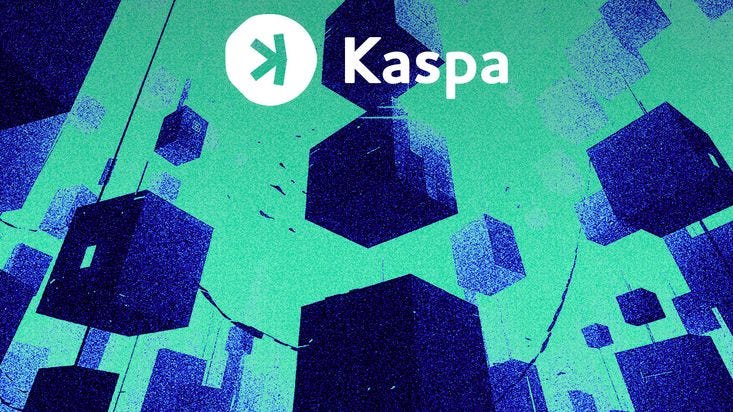
There are two types of mining, mining by pool and solo mining. In mining by pool, participants join a collective group to combine their computational power for solving mathematical problems and earning rewards. The pool then distributes the rewards among participants based on their contributed computational power, offering a more consistent income. On the other hand, solo mining involves individual miners independently attempting to solve problems to validate transactions and create new blocks. Successful solo miners receive the entire block reward, providing full control but with higher earnings variability due to the unpredictable nature of solo block-solving.
Mining Pools
You can find the best pools on these sites.
Hardware
You can find the best Miners/CPU and calculate profitability in these sites.
Software
You can find the best Miner program for kaspa.
Solo Mining
Setup a Kaspa Node 🛟
To setup a node is required to have a wallet! (KDX is a kaspa destock wallet)

The kdx application have an interface where you can use kaspad which is a command-line interface (CLI) solution and still use for your wallet. Find all infos in kaspawiki.
If you choose to mine using a node, there’s no need to connect to a pool; it will be solo mining.

After configuring the templates and clicking “APPLY,” your node will be connected to the chain. This process will take some time, typically around one hour or more. During this period, the node delves deeper into the network, contributing to increased decentralization. You will observe a black page with code running in the Kaspad folder, which can be enabled in the configurations of the KDX.
Stratum
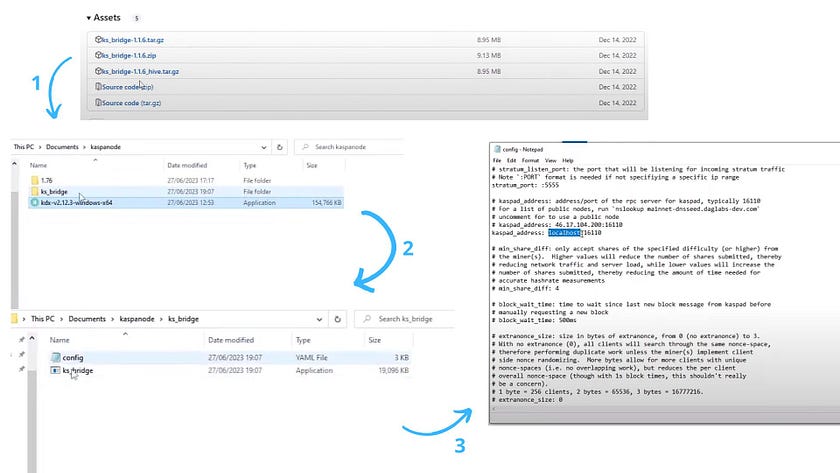
Now that your node is set up, the next step is to connect your node to your CPU. This can be achieved by creating a Stratum, and one effective method is through a stratum-bridge. Download the “ks_bridge” files from GitHub. Open the “config” file using Notepad and replace “localhost” with your IPV4 address (it will look something like this: 174.449.2.234:16127).

The file “ks-bridge” will allow you to check the cash rate in the node.
Note: Pool Miners can create any wallet!
Solo Mining And Pool Mining
Miner
If you’re using BzMiner, it’s advisable to transfer the installed file without opening it. This precautionary step is taken to avoid triggering the software defender, which might otherwise detect and delete the miner. Move the file to a folder that is excluded from the defender’s scans. This exclusion ensures that the mining software remains intact and operational without being flagged or deleted by the security system.
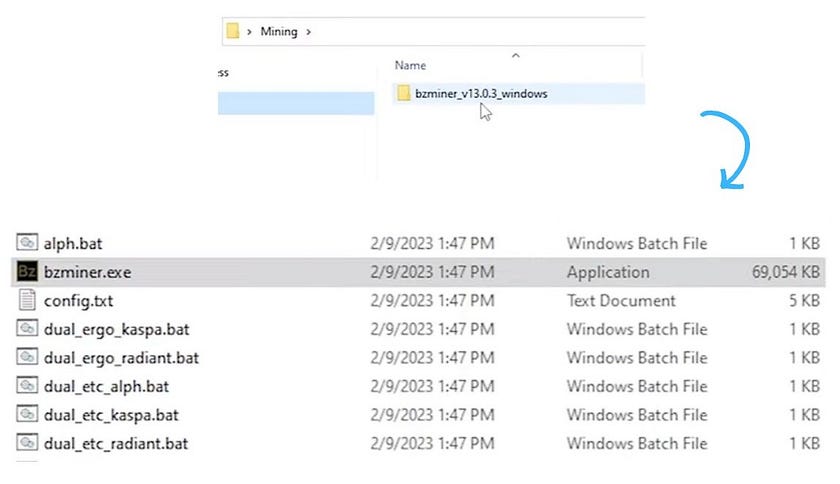
In the folder, you will find two crucial files: “bzminer.exe,” which is your mining program, and “config.txt,” where you can configure your node address for solo mining or your wallet and pool address for pool mining. Once you have set up the “config.txt,” you can open the “bzminer.exe” file to initiate the mining process. This executable file is responsible for running the mining program according to the configurations you have specified, whether it be solo mining to your node or contributing to a mining pool.
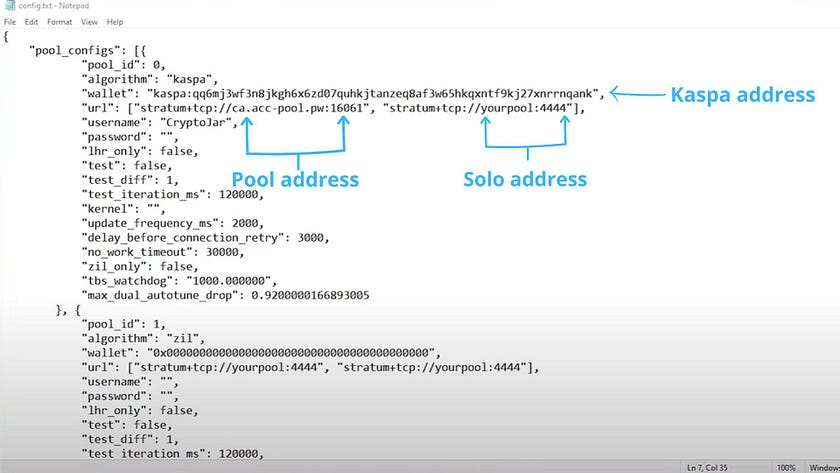
In the `config.txt` file, you need to include one “stratum…” line. If you are mining solo, use the Kaspad_address you set up earlier along with your IPV4. If you are mining in a pool, put the pool address (remember that in a pool, you will only receive Kas when the pool reaches a predefined quota). Additionally, add your Kaspa wallet address to the file. This is the basic setup.
Mining
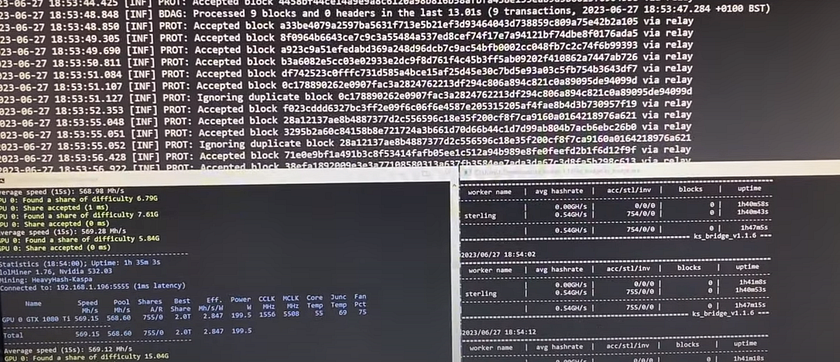
After completing all the procedures, you should be able to open the three files and commence mining.
Tip: Need a smidge of KAS to get you started? Check out the Kaspa Faucet.
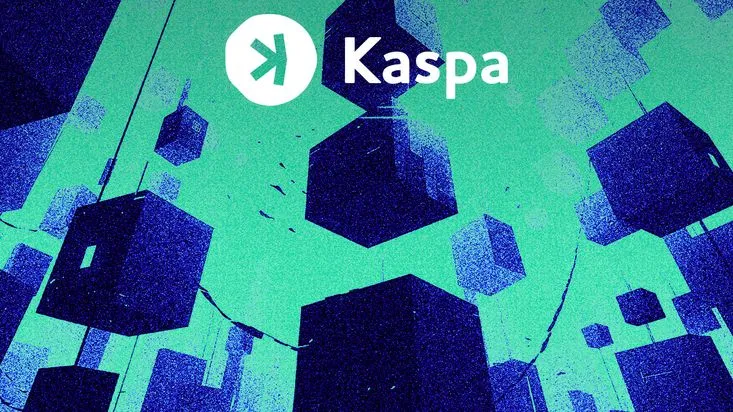
Leave a Reply